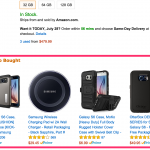 I’ve written a few times recently about the initial forays of IBM’s Watson into retail. For instance, at the back end of last year they launched Watson Trend to help us buy the perfect holiday gift, whilst they’ve also powered the recommendation engine at retailers such as North Face.
I’ve written a few times recently about the initial forays of IBM’s Watson into retail. For instance, at the back end of last year they launched Watson Trend to help us buy the perfect holiday gift, whilst they’ve also powered the recommendation engine at retailers such as North Face.
Both are good examples of the use of AI to help provide more accurate predictions of the things we prefer. A good example of the work being undertaken in this area comes from a recently published paper that sees researchers develop a filtering model to do this job.
Understanding preferences
Their method relies on the assumption that our choices are in large part determined by our membership of particular groups. Whilst that in itself is a touch unrealistic, the tool attempts to add a degree of realism by allowing both individuals and products to belong to multiple groups at the same time. Likewise, it doesn’t suppose that individuals may like just one item, or even items in a single group, at a particular time.
The algorithm at the heart of the model is capable of understanding, and even predicting, the resulting overlap in groups and preferences, thus rendering it, the authors claim, more accurate than current algorithms.
The authors contend that their new model is a more accurate reflection of how people typically behave, and as such as more useful for retailers. They believe it can produce behavioral patterns that are a good match for large chunks of the population, all via a model that is both quick and scalable.